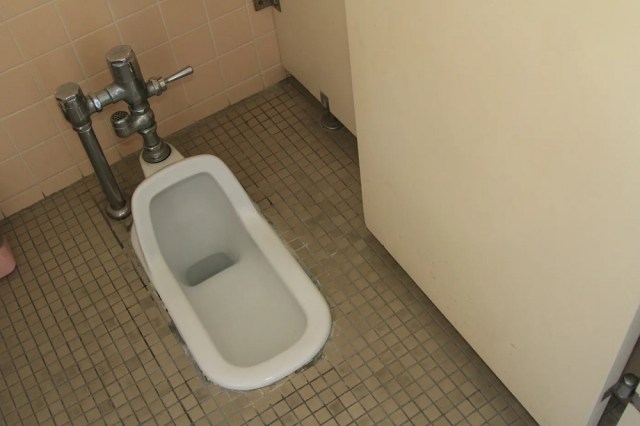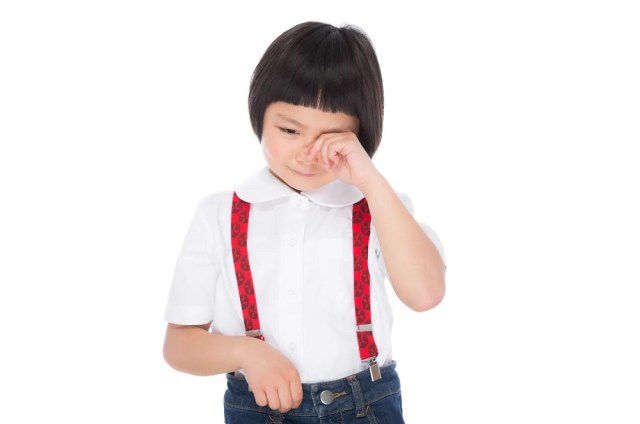
Girls seem to be much better than boys at using Japan’s traditional squat toilets.
Japan’s feature-rich toilets, with such luxurious comforts as heated seats and gentle sprays of butt-washing water, are a source of technological prestige for the nation. However, the Japanese phrase washiki toire, which translates to “Japanese-style toilet,” doesn’t describe those high-tech marvels, but rather a much simpler fixture that’s basically just a trough that you can flush set directly into the floor, as pictured above.
Japanese-style toilets used to be the norm in Japan, but they’re becoming less prevalent in modern society. There is, however, someplace where they’re still very common: Japanese schools. According to the Ministry of Education, Culture, Sports, Science and Technology, only 57 percent of elementary and middle schools in Japan had Western-style toilets as of 2020 (evidently when the most recent data on the subject was collected). That means that at roughly four out of ten schools kids need to use squat toilets, something that the Japan Toilet Labo research organization says is contributing to increasing rates of constipation among Japanese children.

In its annual defecation survey, which collected data from the parents of 1,000 elementary school-age kids, Japan Toilet Labo found that 20.1 percent of the children had constipation or pre-constipation symptoms, a higher number than in last year’s study. The organization asserts that sustained suppression of urges to go to the bathroom can cause constipation, and the survey showed that 81.8 percent of constipated children often or sometimes hold it if they’re at school, as opposed to just 38.4 percent of children without any constipation symptoms.
That would suggest it’d be beneficial to kids’ digestive health to make it easier for them to use their schools’ bathrooms. However, according to Japan Toilet Labo’s data, many children lack the balance and accuracy to drop a deuce cleanly into the trough of a Japanese-style toilet. The survey said that 26.7 percent of elementary school-age kids are unable to use one, with the data showing it’s an especially big problem for boys, perhaps because they can pee into a Japanese-style toilet without squatting or using a urinal, whereas girls’ lack of alternatives leads to more frequent squat toilet usage and greater proficiency through familiarity.
● Can’t use a Japanese-style toilet
Boys: 33.4 percent
Girls: 18.9 percent
● Can use a Japanese-style toilet but don’t like it
Boys: 47.1 percent
Girls: 55.3 percent
● Have no problem using a Japanese-style toilet
Boys: 19.5 percent
Girls: 25.8 percent
Despite those numbers, when the survey asked why kids were reluctant to use their schools’ bathrooms (and allowed multiple responses), only 9.1 percent said it was because of Japanese-style toilets, and Japan Toilet Labo urges schools to take steps to comprehensively increase the quality and atmosphere of their restroom facilities.
● Why don’t you want to use your school’s bathroom?
I don’t want my friends to know I’m defecating: 26.5 percent
I can’t relax: 22.2 percent
I don’t have enough time before I have to go back to class: 22 percent
My friends will laugh at me: 15 percent
The bathroom is dirty: 12.9 percent
The bathroom smells bad: 10.5 percent
It’s difficult to use a Japanese-style toilet: 9.1 percent
Still, roughly one out of 10 kids not wanting, or able, to deal with a squat toilet is an issue worth addressing. The Ministry of Education, Culture, Sports, Science and Technology says that around 90 percent of schools plan to add Western-style toilets, and even provides subsidies to help schools finance the changeover, and hopefully such initiatives and awareness will lead to students being able to look forward to things like playing with their friends or participating in extracurricular activities after school, as opposed to “It sure is gonna be great to finally poop once class is out.”
Source: Mainichi Shimbun via Yahoo! Japan News via Jin
Top image: Pakutaso
Insert images: Pakutaso
● Want to hear about SoraNews24’s latest articles as soon as they’re published? Follow us on Facebook and Twitter!

No hay comentarios:
Publicar un comentario